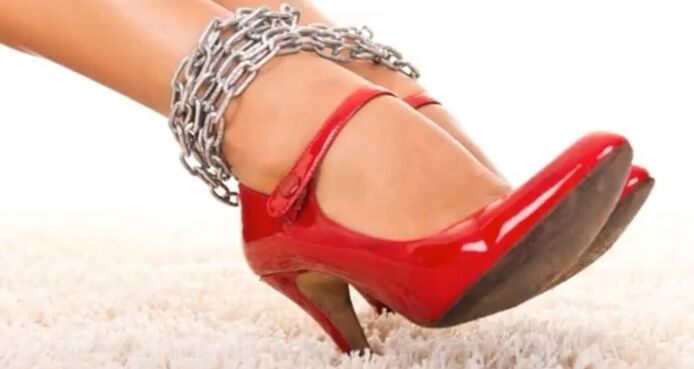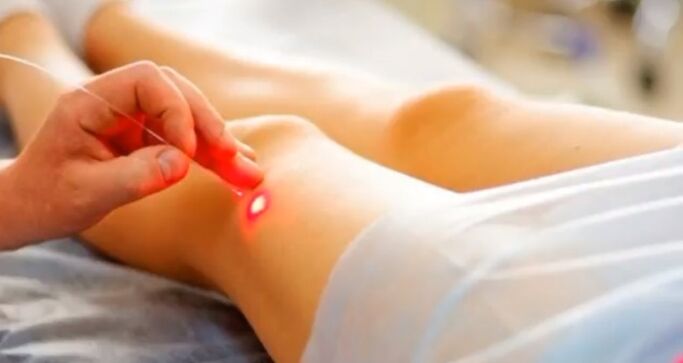Varicose veins, or varicose veins, is a pathological process that many people face. In most cases, the disease affects the vessels of the legs, which leads to their elongation, deformation and thinning of the vascular walls. In addition, the valves located in the veins lose their function completely, which disrupts the systemic blood flow and the blood in the veins stagnates.
Under the influence of the factors described, the vessels increase in size, appear on the surface and show through the skin. As a result, an entire network of vessels is visible on the surface of the skin, often with nodules and trophic ulcers. However, in addition to aesthetic disorders, the problem lies much deeper and is very often accompanied by painful sensations.
The nature of pain in varicose veins
First of all, it is important to understand that the concept "very often" does not mean that pain is 100% accompanied by varicose veins. Much depends on a number of factors, the individual characteristics of the patient's body, and even in the later stages of the progression of the pathological process there can be no pain.
When classifying painful sensations, we first consider their localization:
- In most cases, the pain syndrome is localized directly on the site of the vascular lesions, their deformation.
- Second in terms of frequency of localization is the gastrocnemius muscle, while the pain itself is located closer to the popliteal region of the leg.
- The lowest probability of the localization of the pain syndrome is in the ankle area.

Of course, the likelihood of developing pain in the legs increases as the pathological process progresses. This is due to the deteriorating condition of blood vessels, their increase, the progression of stagnant processes and, accordingly, an increase in vascular pressure. Ultimately, the pressure can rise so much that the vessel walls cannot withstand, there is a risk of internal bleeding, hematomas and trophic ulcers.
Accordingly, the type of pain depends on the degree of development of the disease:
- In the initial stage, swelling of the legs causes painful or rather unpleasant sensations with a pulling or squeezing character. It's important to understand that in addition to poor blood flow, fluid is also retained in the legs, causing swelling. In the initial stage, edema occurs periodically, occurs more often in the evening, and discomfort is caused by fatigue, walking in shoes during the day, in extreme cases, skin tension.
- The fact of fatigue deserves special attention. With varicose veins, the legs tire faster. This manifests itself initially with prolonged physical exertion during the day (when the patient stands for a long time, walks a lot, etc. ). However, as the disease progresses, tiredness becomes more and more noticeable, as a result of which characteristic painful sensations are perceived. In this case, the pain is dull, pulling or aching too.
- At about the second stage of the disease, with a deterioration in the condition of the veins, their more severe deformation and dysfunction of the valves of moderate severity, patients complain of the effects of severity. In this case, the pain is called a burst, in some cases even acute. This is due to the increasing pressure in the vessels, and if at first it is enough to lie down and put your feet on a hill for the pain to subside, then in the future you will need to treat it with medication.
- The most likely is the development of a pain syndrome and its increase in intensity with the progression of the varicose veins into the last, fourth stage. At this stage, the vascular deformation and pressure reach a peak.
It is difficult to describe in more detail the features of painful sensations in varicose veins in the legs. This is due to the individual characteristics of the organism of each patient, as well as the characteristics of the course of the disease. However, pain can be felt as:
- Stupid.
- Draw.
- Pain.
- Demolition.
- Compressing.
- Sharp.
- Similar to rezi.
Even in the second, and even more often in the third phase of the development of the pathology, the pain is accompanied by muscle spasms, which disturb patients mainly during the night's rest.

Causes of Painful Sensations
Understanding where the pain in varicose veins is coming from can help you manage this problem more effectively or prevent pain from occurring. So, pain occurs under the influence of the following reasons:
- Pathological changes in the vascular bed slow down the blood flow in certain areas of the vein. This leads to a decrease in blood flow, as a result of which oxygen starvation begins and pain occurs.
- The blood circulation promotes the elimination of waste products, which the body constantly produces in small quantities. Due to a decrease in blood outflow and its stagnation, decay products are slowly removed, which leads to the appearance of toxins that poison living cells. This process also causes painful sensations.
- Also contributing to the appearance of pain are trophic disorders, which appear in the late stages of the development of varicose veins and, as the disease progresses, only intensify, provoking more and more acute pain.
The pain increases with physical exertion, leg fatigue, and usually becomes particularly intense in the afternoon or evening.
Methods of dealing with pathology
In order to completely get rid of the pain, it is necessary to direct all forces on the treatment of the pathological process. To do this, you need to consult a doctor who will conduct a diagnosis, on the basis of which he will prescribe the most appropriate treatment for a particular patient.
The treatment lasts for a period of time during which the patient is tormented by pain. Hence, it is important not only to understand how to deal with varicose veins, but also to know the methods of pain relief.
First aid in the fight against pain
Eliminating pain is only a symptomatic part of treatment, in most cases it does not affect the solution to the main problem - varicose veins.
However, it is very important to get rid of pain. Consider the main methods of dealing with unpleasant and painful sensations:
- In the early stages of the development of the disease, the pain is unstable, its intensity is rather low and it occurs mainly in the evening. In such cases, it is sufficient to take a lying position and put your feet on a pillow or simply put them against the wall so that the feet are above body height. This position facilitates blood flow and thereby reduces pain and swelling.
- It is also very useful to do a light massage, which involves kneading the lower limbs with massaging and rubbing movements. Remember that during the day you can straighten your legs, which is very useful in the later stages of the disease's development.

Traditional methods of pain relief
In the case of severe pain that is constantly bothering you, as well as in cases where there is no way to massage or relax, you should resort to medication. Of course, only a doctor should prescribe a drug, but in most cases, the following drugs are used:
- Special funds in the form of gels - mainly they are non-steroidal anti-inflammatory drugs (NSAIDs), which are effective in relieving pain, as well as having pronounced anti-inflammatory and moderate antipyretic effects.
- In some cases, you can resort to pain relievers, but with varicose veins, their effect is insignificant and short-lived. These are mainly analgesics and antispasmodics.
- If the painful sensations are accompanied or aggravated by cramps, it is worth talking to your doctor about using muscle relaxants that will help reduce muscle cramps.
- Wearing special compression stockings, stockings or tights is also one of the traditional methods of treating painful sensations with varicose veins in the legs. This method is considered to be the most effective in terms of pain relief and its effects last the longest. The mentioned underwear can only be bought in pharmacies and since it has different degrees of compression, consult your doctor first.
Home remedies
In folk medicine, too, there are many ways to eliminate or prevent pain caused by the development of varicose veins. Consider some of the most effective methods and recipes:
- Horse chestnut - it is necessary to make an alcoholic tincture from the fruits of this tree. To do this, grind 100 grams of peeled chestnuts, put them in a glass bowl and pour 500 milliliters of vodka. Put the container in a dark place and let it stand at room temperature for 7-8 days, stirring once a day. Then the tincture is filtered and the legs are rubbed with it before going to bed or during the day if the pain is disturbing during the day.
- Products based on beeswax or propolis are highly effective in combating pain in varicose veins. To prepare the medicine, take 80-90 grams of propolis, grind it and pour 300 milliliters of medicinal alcohol into a glass container. The remedy is infused for 30 days or until the propolis is completely dissolved, all the time it is also kept in a dark place and shaken regularly. Once the medicine is ready, you can rub your feet or apply lotions.
Prevention of pain
It is also important to understand that in the initial stages of the disease, when the pain is not intense or rarely disturbs, but treatment has started, it is enough to follow the recommendations that will reduce the likelihood of painful sensations:
- Avoid wearing high heel shoes.
- Make sure your shoes are comfortable.
- In the cold season, when working indoors, it is important to switch from boots to lighter and more comfortable shoes.
- Try to minimize the stress on your legs.
- It is impossible to maintain a static position for long periods of time. If you stand a lot, try to sit more, but if you sit a lot it is important to take regular walks or at least warm up.
- During the day, try to massage the lower extremities. A 5-minute light massage will protect you from pain during the day.
- It is also important to lead a healthy lifestyle, practice light sports, eat right, give up bad habits, etc.














































